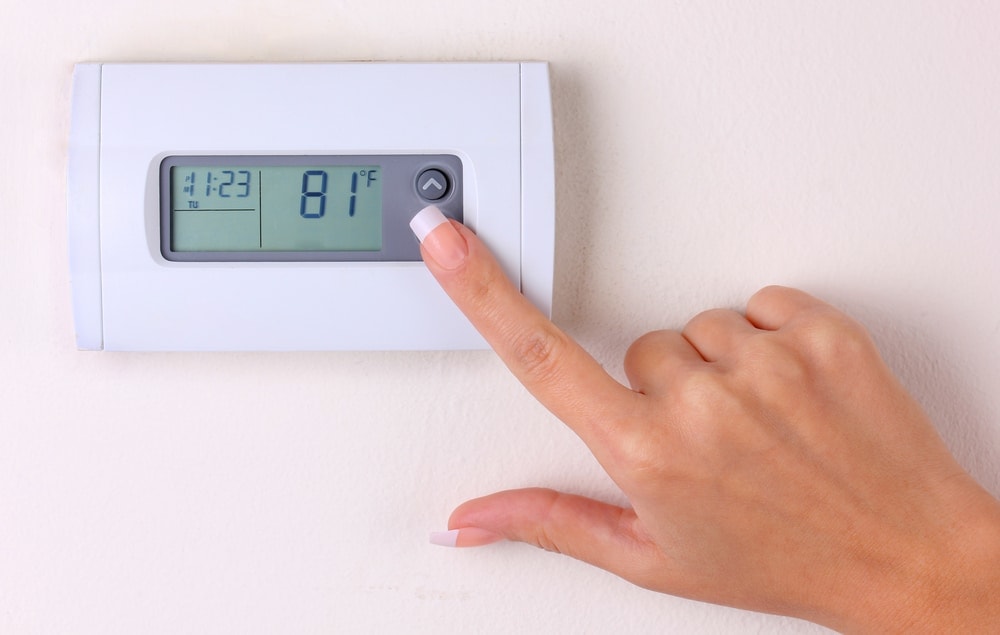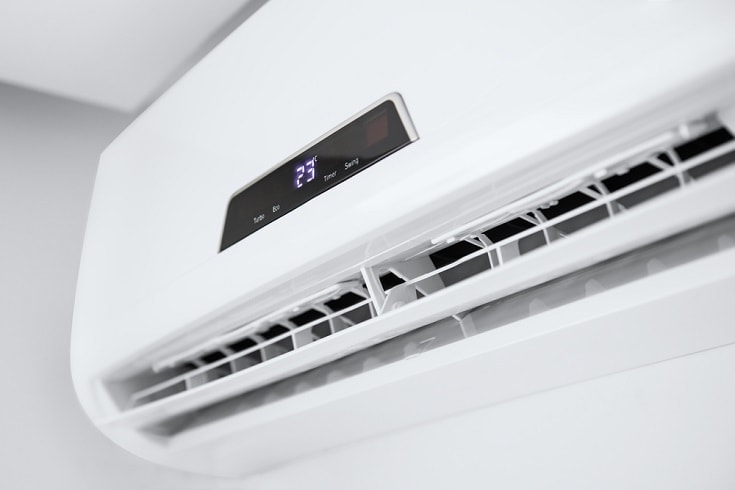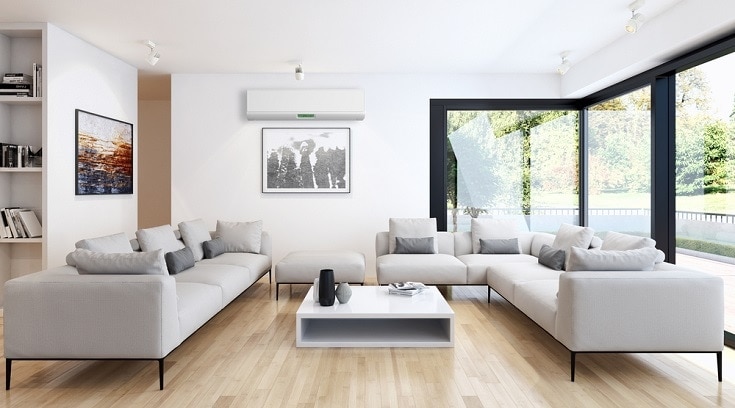How Much Does It Cost to Install Central Air Conditioning? (2024 Price Guide)
-
- Last updated:


In general, you should hire a contractor to install a central air conditioning system. Unless you happen to have particular experience installing these central air conditioners, it is highly recommended that you seek a professional instead of trying to do it yourself.
You will likely pay somewhere between $3,000 to $7,000 for a complete installation with hiring a contractor, including equipment and associated services. The price tag can vary widely, though. Where you live can directly affect the factors associated with purchasing a central air conditioning system. Furthermore, things like the type of system and the condition of your air ducts matter too.
Let’s take a complete look at the factors associated with installing central air conditioning and how they may affect the price.

Factors That Affect the Cost of Installing a Central Air System

Some many services and factors go into installing central air. You are not just purchasing the actual system itself. You’re paying for evaluations and services that are involved with the installation. Here are some other things you’ll need to purchase and consider when factoring in your system’s final cost.
Evaluations
Before you even begin installing a central air system (or purchase one), you will need to have your house evaluated to figure out exactly how big a system you might need. A professional will need to visit your home and figure out how much heat your house gains during the days, which will help them calculate the size of the system you’ll need to keep it cool. This can depend on your climate, but tiny factors can also affect how hot your home gets.
For this reason, you can’t just calculate this based on the temperatures in your area. Someone will need to visit your home and physically calculate how much heat enters your home during the day.
This will likely cost you around $200 – $300.
This is not an optional step. You do not want to install a too-small system in your house, as it will be unable to keep it cool. In trying to cool down your house, the system may break down, and you’ll end up spending a lot on maintenance. At the same time, you don’t want to install a too large system either, as you’ll be spending extra money for no reason.
To save a bit of money and get even more money about your home’s energy needs, consider getting a home energy audit. This can locate things like air leaks and help you lower your overall energy cost. These usually cost several hundreds of dollars. However, you may be able to find rebates and discounts to lower the cost.
Existing Ductwork
Rarely, your home’s existing ductwork may be able to handle a modern air conditioning system. This means you will not need to upgrade your existing ductwork, which will lower your cost significantly. However, most older homes cannot handle modern systems, which means you will need to upgrade your overall ductwork design.
This can be considerably expensive. The old ductwork will need to be removed and new ductwork put in its place. You may also not have room to run a refrigerant line to the outside and may not be able to house an air conditioner coil or larger-sized vents easily. In all these cases, changes will need to be made to your home to accommodate the new system. Most older homes are designed to work with an air conditioner, so they need to be adjusted.
This can get reasonably expensive. However, you can avoid too high energy bills and hot rooms. This is not a factor you can skimp on, as central air must work correctly.
The Type of Unit
After evaluations and ductwork, it is time to consider the actual unit’s cost you need finally. There are several units available. Each costs a different amount and has different benefits. You may be able to choose a type of system, or your home may only be suitable for one.
- Split Air Conditioning Systems — this type of system is made with three main components. There is a condensing unit, evaporator coil, and air handler. The condensing unit is placed outside and is a big metal box with a fan. The evaporator coil and air handler will need to be placed indoors, however. This is the most common type of system. They are also the most economical in homes that already have a furnace. They also don’t require much indoor space, as the biggest component is placed outside. Usually, this system costs $1,400 to $1,700.
- Packaged Central Air System — this system is exactly like a split air conditioning system, but everything is inside one container. Usually, this container is placed on the roof or next to the foundation. They are uncommon in residential homes. Usually, they are only used if a split air conditioning system won’t fit. They are a bit more expensive and can cost anywhere from $1,800 to $3,000.
- Heat Pump. Heat pumps are both air conditioners and a furnace. For this reason, they are best suited when you need both, as you’ll be killing two birds with one stone. The pump extracts or pulls heat into your home, depending on whether your home needs to heat up or cool down. They are extremely efficient options, though they are a bit more expensive. However, you need to consider that they can heat your home as well. Expect them to cost $3,200 to $3,700.
The Size of Unit
On top of different types of central air, you also need to consider the unit’s overall size. An air conditioner’s capacity needs will depend on how much heat your house develops throughout the day, which you should know after the evaluation. Residential systems are measured in tons of capacity. Usually, you can find most types of units from around 1.5 to 5 tons.
You don’t necessarily want to choose the bigger unit. Bigger isn’t always better. The size of the unit should match the needs of your home. Your professional contractor should be able to recommend the perfect unit for your home.
Installation
Finally, after you’ve done your prep work and paid for a unit, you’ll also need to pay the cost of installation and any other labor you’ll need to purchase. Typically, the installation cost will depend much on your geographical location. The experience of the contractor and their business’s size can also make a difference. We recommend getting a few different quotes.
Make sure they are complete quotes, which means the quote covers all the work that will need to be done. This will help you avoid hidden fees at the end of the installation.
Don’t just go for the lowest price, though. Consider the contractor’s insurance, experience, and the included services. Sure, the cheapest option may cost you less upfront. However, you may find yourself spending more money overtime fixing mistakes and getting extra services that should have been provided upfront. Go for the best value, which won’t necessarily be the lowest price.


Check for State Incentives
Some states may also offer incentives for choosing a more efficient unit. Usually, these are credits that you take off on your taxes at the end of the year. This is typically based on the SEER rating, which stands for Seasonal Energy Efficiency Ratio. You can get a tax credit for choosing these more efficient units, but you can also save money on the cooling cost of your home.
Often, these incentives can be up to $500, which can act as a discount on your installation.
Don’t Skimp on a Cheap Filter
Filters are often a place that owners and contractors attempt to save some money. After all, a filter won’t appear to affect the unit’s performance, so it is often a comfortable place to save some money. However, it can cost you in the long run.
Filters do not just affect the air quality within your home. They also directly impact how much debris reaches your unit, which will affect its ability to work correctly and its longevity. If the filter isn’t doing a proper job of keeping your system nice and clean, then you may find yourself spending extra money on maintenance and other issues.
Spend more on a nice filter upfront to avoid higher maintenance costs. This will save you money over time.


Time the Installation Correctly
The time you choose to purchase your system matters. Most people need new central air units in the summer when they are actively being used. For this reason, this is often the most expensive time, and you may find yourself with fewer choices due to the increased demand. Instead, purchase your system and schedule the installation for the winter, when there will be fewer customers getting their units.
You may be able to get your unit for as much as 10% to 20% off. Many contractors are busy trying to keep their crews at work, so they often will give you a discount if it means they get to stay busy (and get paid). Furthermore, most crews would much rather work in the mild weather of spring and fall than in summer’s roaring heat.
- See Also: Window AC vs Central Air: Pros & Cons
Featured Image Credit: bestv, Shutterstock
Contents

